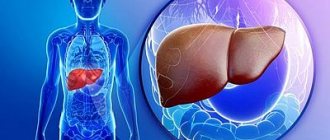The urinary system removes breakdown products of harmful substances and toxins from the human body. If desired, the presence of drugs in the urine can be checked using laboratory tests and tests within 2-6 days after consuming the dose. How long drugs remain in the urine, and the duration of their removal from the body depends on the type of doping taken.
How long do different types of drugs last in urine?
Drugs stay in urine; determination of time: it all depends on what type of chemical the addict uses:
- Hashish, Marijuana with a single dose - from 5 to 8 days. With regular use – 2 months.
- Synthetic drugs – Spice – up to 5 days. With constant use of the chemical - up to 1.5 months.
- Mephedrone from the moment of one-time use - 7 days, with regular use - up to 2 months.
- Heroin with a single dose lasts up to 2 days, regularly - up to 14 days.
- Methadone, when used once, stays in the urine for up to 8 days; if a person uses the drug systematically, it lasts for up to 4 weeks.
- Codeine remains in the urine for up to 2 days after taking medications containing this substance. If the patient takes Codeine systematically, it remains in the urine for up to 3 days.
- Cocaine lasts 4 days with a single dose, and 3 weeks with regular use.
- Methamphetamine, amphetamine stays in the urine for 9 days, with regular use up to six months.
- Ecstasy remains in the urine for 3 days, if abused - 7 days.
- LSD is detectable from the moment of a single dose for 3 days, with abuse - 7 days.
How long does another drug, for example one that has a sedative or hypnotic effect, last? Barbiturates persist in urine for 2 days. With a systematic course of treatment - up to a week. It will take 14 days for antidepressants to be eliminated.
How long does opium last in urine and blood?
Today, various tests are used to determine the content of opium and other narcotic substances in the human body. The most commonly used tests are for the content of opium in the blood and urine, but modern technologies and laboratory tests can detect the drug even after examining nails and hair. Each test has its own sensitivity range. Some of them can show positive results only within a few days, others – months. How long can psychotropic substances containing opiates stay in the blood?
How long does opium stay in the blood?
The drug is cleared from a person's blood at different times, depending on weight and other factors, but testing and analysis can detect opium in the addict's blood 2 days after use. How long does opium stay in the blood? This time is individual, so the figure is quite approximate. Naturally, the longer and more often the addict has used opiates, the more likely the test will show a positive result. The drug accumulates mainly in the fat layer; these tissues accumulate half-life products of opium and destroy the body from the inside. Adipose tissue slows down the natural elimination of opiates from the human blood. In modern addiction medicine, it is very easy to detect opiates in the blood of an addict, even if he has stopped using. To remove toxins from the body, you need to undergo detoxification.
How long do opiates last in urine?
The most effective test in narcology is considered to be a urine test. It is he who will be able to show traces of the drug for the longest period of time. So how long do opiates last in urine? In most cases, specialists can detect traces of the drug in urine within 72 hours after the last use. If an addict uses heroin, the time it is detected in the urine is affected by the frequency of use and duration of use.
How long do opiates last in urine? If a person tries heroin once, it can be detected within four days, but if an addict regularly uses the drug, its toxins can be detected a week after the last use. Depending on various factors, the detection time for opioid drugs also varies.
How long does opium poppy last in urine? In addition to the duration of use, the rate of drug elimination from urine is affected by existing diseases of the genitourinary system, kidneys, liver, skin, etc. Opiates can remain in the urine for quite a long time, so they can be identified using modern laboratory tests quite quickly and easily. It is impossible to hide the presence of drugs in the body.
How long does opium last in nails and hair?
How else can you detect a drug? In addiction medicine today, various types of tests are used, in particular, detecting drug content in nail plates and hair. Unlike body fluids, opium can be detected in hair and nails months after the last use. However, these studies are quite expensive and take longer and are more complex. The longer the hair and thicker the nail plate, the more accurate the test result will be. Traces of the drug can be detected in hair 3 months after taking heroin or morphine, and in nails even after weather conditions.
What else affects the rate of drug elimination?
The rate at which drugs are eliminated from the human body depends on several factors:
- physical condition of the drug addict;
- quality and quantity of the substance consumed.
The physical condition of the body is assessed from the point of view of the quality of the excretory system and metabolism. Metabolic speed depends on certain factors that slow down detoxification processes:
- Age: in young drug addicts, metabolic processes proceed faster than in an adult patient.
- Obesity: narcotic substances accumulate in subcutaneous fat and can remain there for a long time, gradually poisoning the body. How long does the toxin last in fatty tissues: definitely up to several months.
- Bad habits: alcohol abuse and smoking negatively affect the internal organs of a person: lungs, liver and kidneys.
- Depression, stress, presence of psycho-emotional tension.
- Diseases of the gastrointestinal tract: kidneys, liver, lungs.
- A sedentary lifestyle leading to lymph stagnation.
A single dose of the chemical does not cause persistent intoxication of the body. Regular use of increasingly large doses leads a person to a serious stage of addiction, at which withdrawal symptoms begin, requiring the intervention of specialists. Otherwise, the situation may get worse.
Opium analogues
All substances that affect opioid receptors are analogues of opium. The 2 most common substances are:
- heroin;
- morphine
Heroin is sold on the black market, and morphine can be purchased at pharmacies. Heroin is 10 times more potent than morphine, but also tens of times more toxic than morphine. Both drugs are dangerous and instantly addictive.
Other analogues include methadone, codeine, promedol. These drugs are more often used in medical practice. Methadone is a substitution treatment for opioid addicts. Codeine is added to cough suppressants and is especially effective against whooping cough. Promedol is a remedy used by traumatologists and emergency doctors, as it relieves pain well.
There are many other analogs of synthetic and natural origin. They all have a similar effect: they have the same negative effect on the body and are addictive. Therefore, the drugs belong to list A. Drugs from this list are kept under lock and key, and strict records are kept of them.
Urine drug tests
Drugs in urine are detected by home or laboratory testing. The advantage of taking the test at the Svoboda clinic is that it guarantees a 100% reliable result. Chemical-toxicological examination of urine (abbr. CTI) reveals drugs that were taken by the patient within 1-3 days. Interested persons will receive a more reliable result using the quarterly test method, but it is carried out on the basis of blood taken. A urine test at the Svoboda RC clinic takes from 2 to 20 days.
Express tests for the use of chemical substances can be purchased at a pharmacy and analyzed at home.
Detoxification in the clinic
It is recommended to completely cleanse the body of drugs in a hospital. Doctors select the procedure individually:
- Classic detox. Used when using any drugs other than opiates. A course of drug detoxification in a drug treatment clinic consists of several sessions and takes from 1-2 days to a week. Doctors give the patient IVs with saline and medications that stimulate the elimination of narcotic substances. Such procedures smooth out the symptoms of withdrawal: pain, nausea and vomiting, sleep disturbances, etc.
- Accelerated opioid detoxification (AOD). Recommended after prolonged use of opiates. In this case, it is difficult for the patient to endure a classic detox, since the withdrawal syndrome will be excessively painful. Opiate-blocking drugs are administered under general anesthesia and reduce the duration of withdrawal. After 5-8 hours spent unconscious, the patient wakes up without feeling the need to take the drug.
- Hemosorption and plasmapheresis. These are hardware methods that are used in severe cases. For example, if the addict has kidney or liver failure, or in case of an overdose. Special equipment removes drug-poisoned plasma, clearing the blood of toxins.
Detoxification is not a treatment for drug addiction, it is only the initial stage. After this, the addict needs complex therapy using medications, physiotherapeutic and psychocorrectional methods to restore mental and physical health.
Rapid urine drug tests
The main advantage of using rapid tests is that drug markers are affordable. They detect the use of up to 10 chemical substances and can be purchased at pharmacies without a prescription. Home rapid tests look like strips that are soaked in reagents. The latter react with urine. If there are drugs in it, then the reagents begin to react to the chemicals with one strip in the control zone. If a person is clean from drugs, two red stripes will appear in this area.
The features of the tests are that they give a quick result (9 to 10 minutes), have a high percentage of reliability, and are affordable. But experts recommend checking the results of express drug tests in the laboratory of the Svoboda RC clinic. The tests do not “see” a person’s use of Spice and designer drug combinations.
Effect on the nervous system, internal organs
Dependence on opium is formed from the first use. All opiates are capable of causing instant dependence, which is formed at the level of the central nervous system and its receptors. This happens quickly, but in stages.
Stages of addiction formation:
- drug use;
- effect of the drug on receptors;
- depletion of opioid receptor mediators;
- development of drug resistance;
- constant increase in dose;
- complete absence of production of endogenous opiates;
- the formation of persistent mental and physical dependence on the new dose.
The term “physical dependence” means that without the introduction of opium, the body is not able to produce it itself. Without a new dose and without endogenous opiates, the body begins to transmit pain impulses through receptors (normally, in every person they are blocked by endogenous opiates), which the central nervous system recognizes and causes severe pain - withdrawal begins.
In the development of addiction, the dose and frequency of use are always significant. The more a person uses, the faster all stages of addiction development pass.
When is a drug test needed?
Taking a drug test at home or in a laboratory is necessary in various situations. For example, when committing an administrative offense or in an accident, participants need to prove that they do not use drugs. For professions that involve performing certain functions, testing is also provided: police, military, drivers, pilots, etc.
In addition, an analysis must be carried out if relatives suspect that their loved one has become dependent on chemical substances. The opinion of relatives may be based on his inappropriate behavior, changes in habits, circle of environment, appearance.
It is mandatory to take a drug test in the following cases:
- medical examination upon admission to educational institutions of a certain profile;
- employment (in some situations);
- travel to another country for permanent residence;
- obtaining a weapons license.
At the Svoboda RC, laboratory tests are carried out to detect drugs in human blood and urine.
Amphetamine cleansing period
As can be understood from the above, the timing of amphetamine withdrawal will depend on a number of factors and characteristics of each person’s body.
The drug can be present in urine for no more than 4 days with a single dose. And with systematic use, the period increases to one week. But the substance will remain in the blood for a single dose for 7 days, while with constant consumption it will practically not be excreted from the body.
It is possible to detect drug content in saliva within five days. And amphetamine is contained in nails and hair for a long time - from 3 to 4 months from the moment of administration.
How to speed up the removal of drugs from the body at home?
Self-removal of drug toxins at home is theoretically possible if the person does not have serious pathologies and a long history of use.
It should be understood that ignoring professional help has a low degree of effectiveness, can be complicated by negative consequences, and is carried out in universal ways.
When choosing a medication for self-detoxification, you should not take it without the advice of a doctor. This threatens the occurrence of side effects from the drug.
Detoxification can occur naturally if the patient creates optimal conditions for this:
- Drink plenty of water if there is no problem of fluid retention in the tissues. Forced diuresis helps increase the efficiency of detoxification, stop dehydration, and improve the functioning of internal organs. The amount of fluid consumed doubles. But at the same time, it is necessary to monitor the amount of urine excreted, the formation of swelling on the legs and face.
- Healthy and quality sleep, which helps the body accumulate energy. To do this, it is necessary to relieve the nervous excitement in which drug addicts often find themselves.
- Formation of a complete diet. Food should bring vitamins and nutrients to the body. Snacks and fast food, snacks and processed foods should be avoided. Broths, berries, herbs, citrus fruits, and nuts will be of particular benefit to the patient.
- In a serious condition, it is necessary to abandon physical activity, which is useful during the rehabilitation period of a drug addict.
- If you feel normal, it is important to walk in the fresh air.
With self-detoxification, the symptoms that arise against the background of poisoning of the body with toxins persist:
- diarrhea:
- weakness;
- drowsiness;
- instability of the emotional background.
If the sick person’s condition is satisfactory, detoxification at home continues for at least 6 days. In the clinic, the process takes up to 3 days.
A drug addict who ignores the help of doctors at the Svoboda RC should know that self-medication often leads to serious complications that require emergency hospitalization. These are conditions such as convulsions, fainting, repeated vomiting, mental abnormalities, and manifestations of acute pathologies. The problem with self-medication, in addition, is that there is no person next to the patient who can provide medical assistance in emergency situations.
Time frame for amphetamine detection and determinants
How much amphetamine leaves the body will depend on several factors:
- Amount of drug taken. If amphetamine was used on the recommendation of a doctor, then its single dosage will be from 5 to 10 mg, and complete elimination will take about 2-3 days. But a single dose for a dependent person is from 20 to 30 mg, and the complete elimination time is about a week.
- Method of use. When a drug is inhaled or swallowed, almost all of it enters the bloodstream. But at the same time, it will contain a number of additives, which will reduce the effect slightly. But with a subcutaneous injection, the drug enters the bloodstream in an unchanged composition. This method was used by doctors who prescribed “hairdryer” to treat a number of diseases.
- Metabolism. The timing of detoxification will directly depend on the addict’s metabolism. Often in young people it takes a minimum of time, and accordingly the drug is eliminated faster than in adults and elderly drug addicts.
- Admission deadlines. The human body is a complete and multifunctional mechanism. Toxins and other breakdown products of the drug remain in the body for no more than a week after a single dose. The liver, which acts as a filter, copes with this function perfectly. But with systematic use of the drug, it can be detected in the blood even several weeks after use. But this is not done at home, but when you go to a medical office, where doctors will test for amphetamine.
Methods for removing amphetamine
How much amphetamine comes out became clear from the information above. Below we will describe effective methods for removing the drug.
- Drink plenty of fluids. The more fluid enters the body, the more actively the diuretic apparatus will work. And with each urination a certain part of the substance will be excreted.
- Artificial induction of vomiting. This method will be effective only if you take pills, and only within 10 minutes after taking them.
- Drinking milk. Milk binds toxins.
- Visit to a drug treatment clinic. The most effective detoxification option is to contact professional narcologists.
The “Unika +” clinic employs the best specialists who, using modern techniques, will help the patient not only remove amphetamine from the body, but also return to a full life, overcoming drug addiction!











